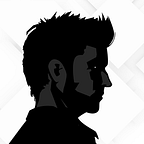Transitioning from Visual Designer to UX Designer
Having worked as a visual designer for most of my career, the expansion of my role to a user experience designer seemed natural. The reason being that there’s really no one involved in making websites and apps that shouldn’t have an understanding of user experience. From the project manager to the developer, every decision should be made with the end user in mind. So as a visual designer, while certain elements may seem arbitrary, the goal was always to guide the user to the intended action. Without even being consciously aware of it, I was learning UX as I grew as a designer, because UX is the science behind good design. If design is the action, UX is the intention.
The addition of UX to my role came about out of necessity, as I transitioned from a larger team to a smaller one, taking on the work that would normally be done by another person. The interesting thing about the workflow at Grafton Studio is that UX is a role shared by us all at the outset. Once a plan is set, it’s my job to dive into the details, draft up wireframes, and set the stage for what will eventually become a user interface design. In this sense, projects have a steadier flow. At no point is there a handoff from one person to another that comes as a surprise. Design is simply the evolution of the wireframes, not a reinvention of them. And Luke, our developer, plays a key role in the strategy of a site or an app, so he’s on board with the design decisions that come his way.
My approach to wireframe design is that I treat it as a rough draft for my eventual UI designs. But without color, images, or nuanced design elements in place, the layout is abundantly flexible, and lends itself well to changes both large and small. There’s no emotional attachment there, on my part or on the part of the client, so updates are fast and easy. UX design is freeing in a way, because it’s like designing from a higher, bird’s eye view.
The longer I’m responsible for both UX and visual design work, the less I see them as separate disciplines. One is simply the pretext to the other, with usability and clarity being an essential element for both. Certainly, we all have our specialties and unique skill sets. But the perceived divisions between our roles need not be so concrete. It’s been an eye opening experience to tear down that wall, and add some variety and perspective to my design career.
Originally published at GraftonStudio.com.
